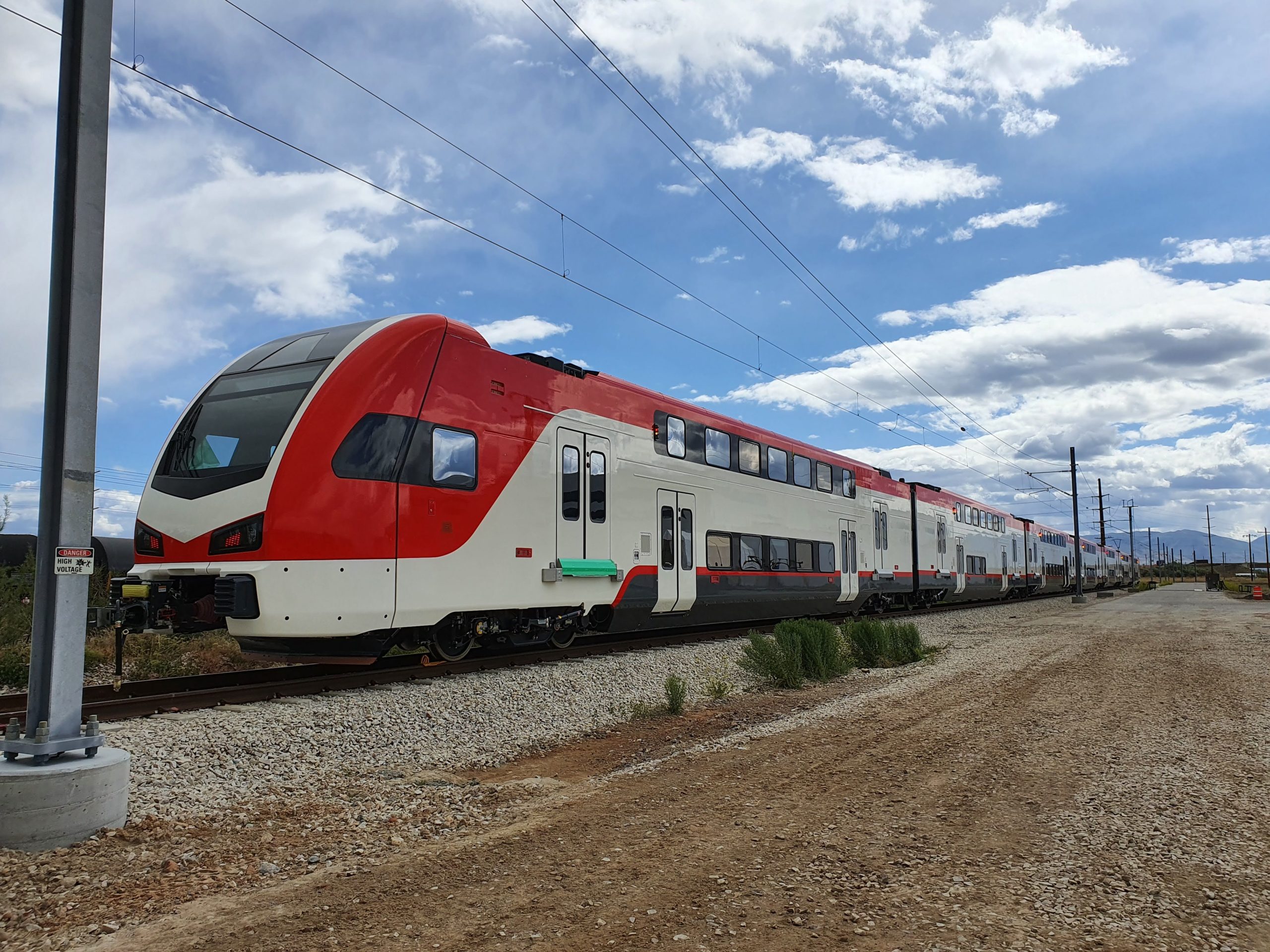Touting Positive Polling, Caltrain Prepares for Sales Tax Push
10:18 AM PDT on June 29, 2020

Caltrain will get its first electric trains soon. But it may not have the cash to run them. Image: Calmod
Note: GJEL Accident Attorneys regularly sponsors coverage on Streetsblog San Francisco and Streetsblog California. Unless noted in the story, GJEL Accident Attorneys is not consulted for the content or editorial direction of the sponsored content.
It's no secret that transit agencies have been hit hard by the COVID-19 slowdown. But even as Caltrain warns that crippling cuts or even the agency's closure are possible, the agency is offering the public a chance to not only save existing service, but possibly expand and buy new trains.
A 1/8 cent sales tax measure for the San Francisco, San Mateo and Santa Clara tri-county area could be on the November ballot that would dramatically change Caltrain's fortunes. Early polling conducted by the agency shows that the measure has support from 63% of likely voters. The measure would raise $108 million annually and be the first consistent, reliable, dedicated revenue source.
With an uncertain road to election day, the poll both provides encouragement to Caltrain supporters and a roadmap for the next several months.
"The poll shows wide swings based on messaging, with 70% in support after positive messaging, and much lower support after negative messaging. So the outcome will depend heavily on an effective campaign," writes Adina Levin, who chronicles all things Caltrain related at Green Caltrain, the blog for Friends of Caltrain.
Even with the swing, the Caltrain ballot measure attracts just over 58% of likely voters after receiving negative messaging about the measure. That twelve point swing, as well as the failure of a pair of bay area transportation funding measures on the spring ballot, is still cause for concern.
But Levin sees a way to improve the agency's chance of ballot box success.
The poll shows "the strongest support comes from people who were frequent Caltrain riders before the pandemic. So on the margin, Caltrain riders reaching out to their friends, neighbors, co-workers and family talking about the importance of Caltrain into the future can be powerful in what would likely be a close race," Levin continues.
Funding Caltrain has always been a somewhat confusing formula. The agency gets nearly 70% of its operating funds from fares. The rest of operations, and all of its capital budget comes from the three-member counties. The agency's capital budget is split equally among the 3 Caltrain partner agencies and any operating budget shortfall is covered in proportion to each county's share of weekday AM boardings on the mainline SF-SJ service, excluding the Gilroy extension, which is solely VTA's responsibility.
However, the pact between the counties requires that each county pay an equal amount, so if one county has its own budget shortfall, all three counties contribute less than expected. This instability, along with uneven contributions from other transit agencies, creates irregular budgets and makes long-term planning difficult.
Even though, advocates were concerned about increasing funding for the agency when the measure was first proposed in April because the agency did not have a strong plan in place to address equity concerns and because there were concerns that the funding would end up replacing the commitments from the counties instead of augmenting them.
However, according to Levin, the agency has been working to address both concerns.
"Caltrain has been working on studies about opportunities to improve equity and connectivity (which turn out to be closely related, since accessing Caltrain by public transit is particularly important
to lower-income riders). The poll shows that connectivity and affordability are rated very high by voters, following top priorities regarding congestion relief," Levin continues.
"Policies on equity and connectivity will be coming to the board shortly, and Friends of Caltrain wants to see the board approve strong policies that will be implemented by the ballot measure."
To put a measure on the ballot the agency needs approval from a large variety of governmental bodies. The Caltrain proposal already has legislative approval from Sacramento from a similar effort in 2017, support from two partner transit agencies' board of directors (VTA and SFMTA), and the Santa Clara County Board of Supervisors. It still needs the support of San Francisco and San Mateo Board of Supervisors' as well as the Caltrain Board of Directors. All of these votes are scheduled for July, with final approval from the Caltrain Board coming on August 7th.
Stay in touch
Sign up for our free newsletter



